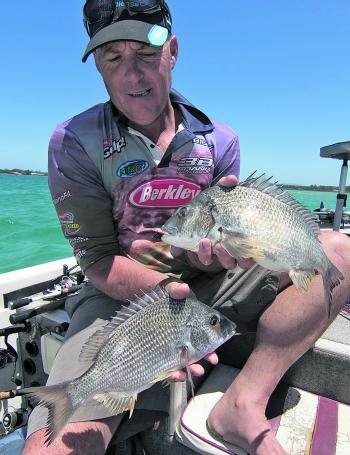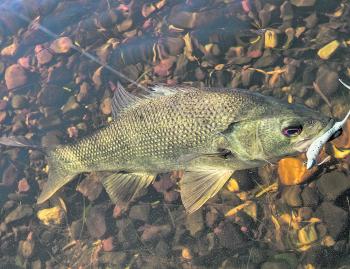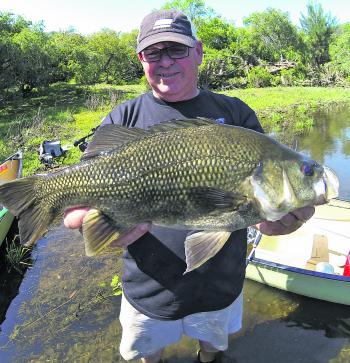January is a month of excess. Christmas and the New Years festivities are over and by mid month, most of the New Years resolutions have been forgotten or wilfully broken, leaving only guilt. What’s a better way to relieve the guilt than to get out on the water, away from everything and everyone judging you? It’s at least an excuse to go find some fish.
For those venturing offshore and visitors to the area, the FAD is approximately 16km off Cape Hawk at 32° 13.211’, 152° 40.680’. I’ve been told some small model mahimahi are about. I wouldn’t be surprised if the bigger fish are skirting around too. The FAD is in about 80m of water and the only two variables that can affect the fishing are the weather and the current. Both should be monitored leading up to any offshore venture.
Apart from the mahimahi, there are bonito schools with kings and an early billfish or two. This time of year is known for the odd big kingfish. They were evident, harassing a school of slimies off Blackhead last time I was out fishing the rocks. For the bottom bouncers, the gravel, reef and sand patches have a blanket of flathead. It doesn’t matter if you catch duskies in the lake or sand flatties from the deep, they all eat very well indeed.
The warm weather has heated things up in the estuary with bream spread throughout the system. I even caught a couple on surface in totally fresh water – a good way from the salt. Early mornings on a high tide are my pick of the surface action for bream. They’re still hunting the shallows, getting on top of the oyster trays – they’re very responsive to lures worked over these areas. It doesn’t matter if it’s a surface lure or a lightly weighted plastic shimmied over the surface, it won’t be long before you see the cruising vee wake of a fish behind it. Pulling them from heavy cover or the racks is all up to you.
The main target in the lake and estuary this time of year is flathead. They have been fishing very well with more than enough fish to satisfy the average angler. Look for areas with scattered weed patches between the mud and sand and don’t discount the shallow fringes of the many islands that make up the Wallis Lake system. There have been a lot of small fish – a good sign for the future – so watch your size limits of 36cm. Baits of beach worms and yabbies will get the job done in the lake and are also very handy baits from the breakwall and beaches.
I’ve noticed a lot of whiting holding over the flats and channels down toward the bridge. Little Tern Island is one spot that was holding good numbers of fish. The Forster side channel produced a heap on 3B Pop Dogs last time I fished it – nothing huge but plenty of keepers. I can only imagine what a live yabby or worm bait could do, drifted along the sand edge.
Visiting bass anglers will have to share fairly heavily fished water, but the secret to catching fish in these spots is to work soft plastics slow and deep. Gulp Jigging Shrimp and Camo 2” Shrimp are the go to lures for my money. Rig them on a 1/16 or 1/8oz jighead, cast to weed edges or in the sticks, allow them to sink and there’s a good chance of success.
Upper Wallamba River or the Manning will produce fish. Even if they don’t, it’s a great way to spend a few hours on the freshwater.
Reads: 2021
Paul Albery with a pair of decent bream extracted from the lower leases. There is always flathead by-catch to keep for the table.

A healthy 45cm bass fell to a Gulp Jigging shrimp fished deep in a hole that most would paddle over.

At 49cm fork length, fish like this one are a goal for many bass anglers




